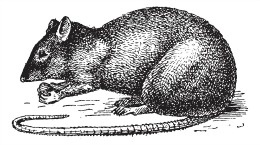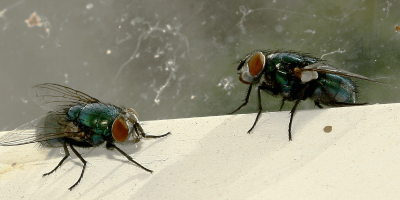A History Of Pest Control

Have you ever wondered how humans, rodents, and insects coexisted back in the days before pest control was a common service? It would probably be incorrect to assume that people simply tolerated pests and went about their lives; it’s likely that some forms of pest control have existed since before recorded history. But since there are no written accounts of pest control methods dating earlier than 2500 BCE, we can only speculate. For all the years that come after, we’ve summarized a brief history of pest control:
Ancient Origins Of Pest Control
The earliest record of pest control dates back to around 2500 BCE. Researchers discovered an ancient Sumerian clay tablet with inscriptions detailing the use of sulfur compounds to kill chigger mites and relieve itches. It wasn’t until approximately one thousand years later that farmers began to employ cultural control techniques, such as scheduling the timing of their crops to coincide with insect life cycles. Around 1200 BCE, the Chinese discovered the use of botanical insecticides and fungicides for seed treatment, and began using mercury and arsenic in substances to control body lice. Two centuries later, the Greek poet Homer referred to the use of sulfur in fumigation and other forms of pest control. The first rat-proof granary was constructed by Marcus Pollio, a Roman architect, in 13 BCE.
The ancient Chinese pioneered a variety of pest management practices between 300 and 400 AD. For starters, the Chinese have been credited as the first civilization to employ biological controls to keep pest populations in check. In 324 AD, they began introducing ants and predatory mites on citrus trees to help manage caterpillars and wood-boring insects, going so far as to install bamboo bridges between trees to allow the insects to wander freely throughout the orchard’s plants and feed on pests like beetles. By 400 AD, Ko Hung, a Chinese alchemist, recommended that white arsenic be applied to roots when transplanting rice. The chemical offered protection against insect pests.
After the fall of the Roman Empire, scientific advancement stopped for a long period, and pest control and sanitation practices virtually halted.
Ye Olde European Pest Management
Organized pest control most likely originated during the early Middle Ages (500 to 1100 AD) as a result of the demand for rat extermination. Chemicals and plant extracts were known to kill rats, but many European citizens tried outlandish superstitions as well. There are multiple historical recordsof people chanting the names of saints and reciting various religious incantations in an attempt to drive rodents out of cities and towns all over Europe. Also, there were written reports of Europeans “rhyming” them to death, or using bagpipes to scare them away.
Later, pesticide and “ratsbane” vendors began to organize as professional rat catchers. Rat catchers attended county fairs and marketplaces telling stories and performing juggling acts and magic tricks in addition to their primary job of rodent extermination. Probably the most infamous rat catcher tale is Robert Browning’s 1842 retelling of the Pied Piper of Hamelin story, in which the rat catcher agrees to drive a population of rats into the Weser River. When the townsfolk fail to uphold their end of the verbal agreement (they don’t pay him), he enchants the children of the village by the sounds of his pipe, leading them all away.
Of course, pest control has come a long way since the Pied Piper. If you have any questions about present-day pest control methods, the experienced professionals at JP Pest Services would love to help! Whether you need free pest identification by our certified Entomologist, Dr. Gary, or you’d like to learn more about the pests that could affect you in our pest library, we’ve got you covered.



